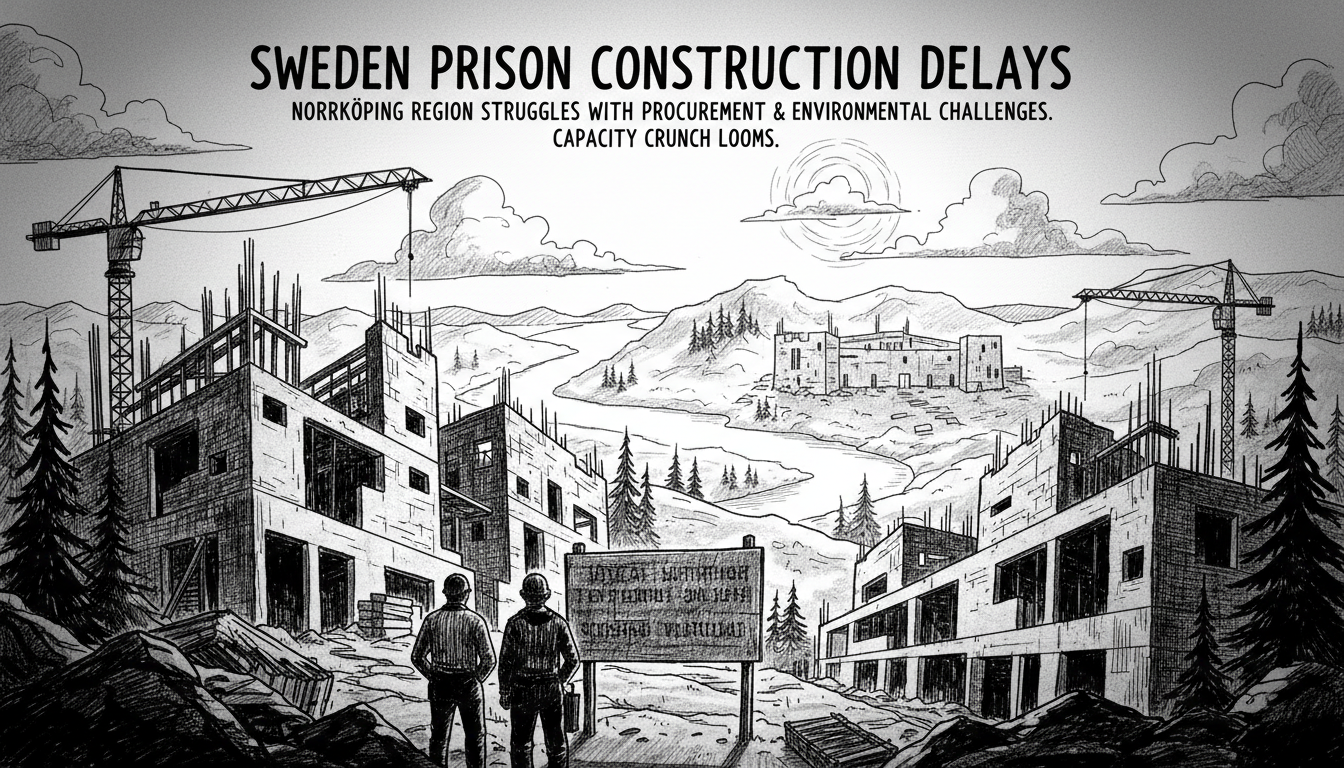Two major Swedish prison projects face significant construction delays in the Norrköping region. The new maximum-security facility planned at Kvillingeslätten near the E4 highway has encountered procurement challenges. Officials began the contracting process in summer but have yet to select a builder. They now hope to secure a contractor sometime after the new year.
Christoffer Sunesson, head of property projects for the Swedish Prison and Probation Service, provided updated timelines. He said the main prison could be operational around 2032 if no major obstacles arise. Potential delays include appeals of detailed plans and procurement decisions.
Meanwhile, the Skenäs facility on Vikbolandet faces its own complications. This institution is undergoing conversion from an open Class 3 prison to the higher security Class 2 level. The project was originally scheduled for completion this past summer.
Sunesson acknowledged the construction delays at Skenäs. He cited difficult ground conditions and extensive environmental assessments as primary causes. The current forecast suggests completion by autumn 2026.
The Skenäs facility confronts additional challenges beyond construction delays. If the government's proposal to lower the age of criminal responsibility to 13 passes parliament, Skenäs will become one of Sweden's youth detention centers.
Ann-Britt Bordinghaus, head of the prison service, explained the implementation timeline for youth facilities. Various institutions within the prison system will receive this assignment in two phases. Skenäs belongs to the second group of facilities. The youth department should become operational after the 2026-2027 new year period.
These delays reflect broader challenges in Sweden's prison system expansion. The country has been working to modernize its correctional facilities amid changing crime patterns and sentencing policies. The conversion of existing prisons and construction of new facilities represents a substantial infrastructure investment.
International observers note that Sweden's approach to prison design emphasizes rehabilitation alongside security. The delays at both Norrköping-area facilities could temporarily strain the national prison capacity. The situation warrants monitoring as Sweden balances penal reform with practical construction realities.
The extended timelines for both projects highlight how complex prison construction involves multiple regulatory, environmental, and logistical considerations. These factors frequently create longer development periods than initially anticipated in major public works projects.

